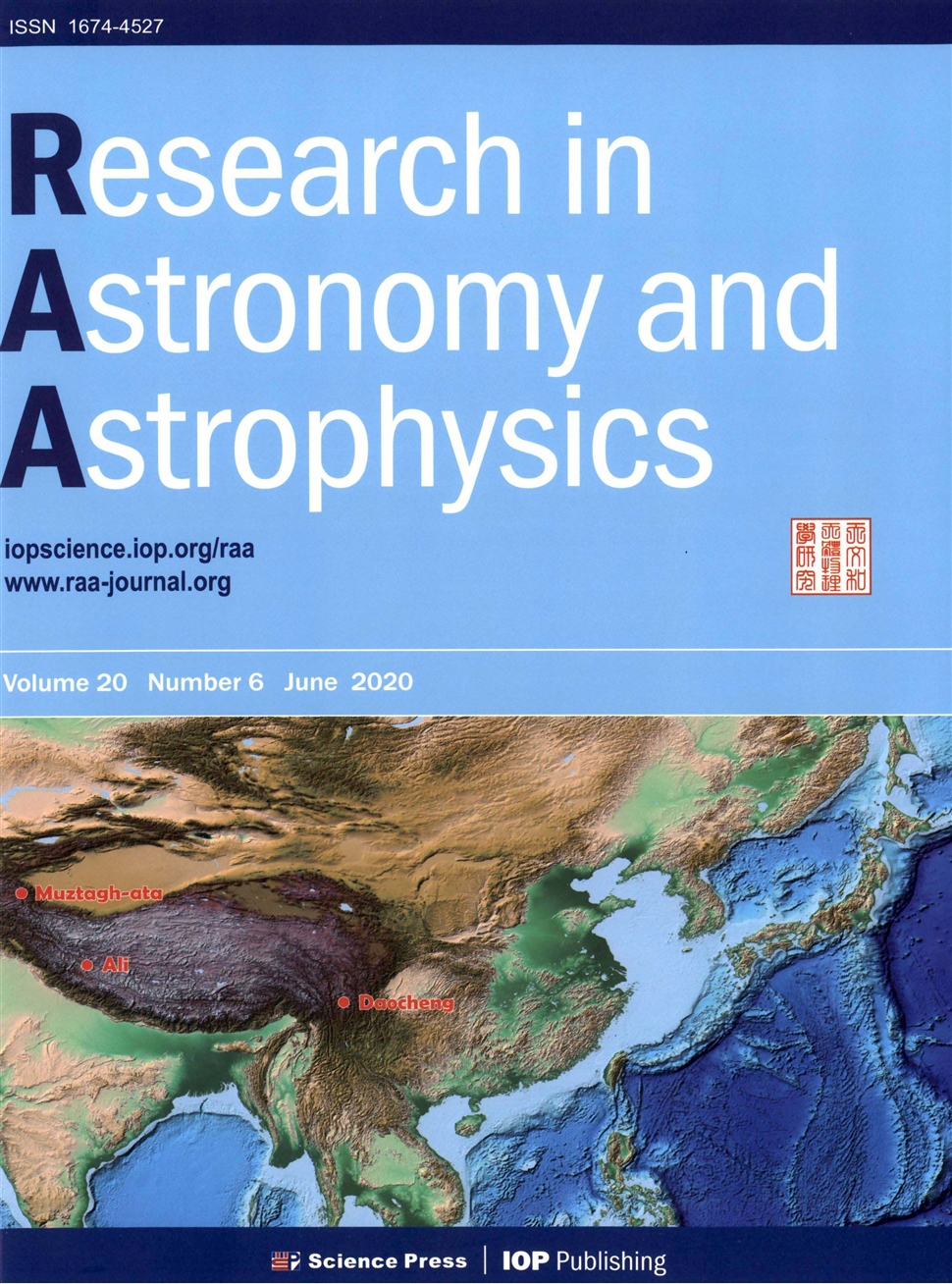Luminosity of a radio pulsar and its new emission death line
作者:Qing-Dong Wu,Qi-Jun Zhi,Cheng-Min Zhang,De-Hua Wang,Chang-Qing Ye
摘要:We investigated the pulsar radio luminosity(L),emission efficiency(ratio of radio luminosity to its spin-down powerE),and death line in the magnetic field(B)versus spin period(P)diagram.We found that the dependence of pulsar radio luminosity on its spin-down power(L-E)is very weak,shown as L~E0.06,which deduces an equivalent inverse correlation between emission efficiency and spin-down power asξ~E-0.94.Furthermore,we examined the distributions of radio luminosity of millisecond and normal pulsars and found that for the similar spin-down powers,the radio luminosity of millisecond pulsars is about one order of magnitude lower than that of the normal pulsars.The analysis of pulsar radio flux suggests that these correlations are not due to a selective effect but are intrinsic to the pulsar radio emission physics.Their radio radiations may be dominated by the different radiation mechanisms.The cutoff phenomenon of currently observed radio pulsars in B-P diagram is usually referred as the"pulsar death line",which corresponds toE≈1030 erg s-1 and is obtained by the cut-off voltage of electron acceleration gap in the polar cap model of pulsar proposed by Ruderman and Sutherland.Observationally,this death line can be inferred by the actual observed pulsar flux S≥1 mJy and 1 kpc distance,together with the maximum radio emission efficiency of 1%.However,the observation data show that the 37 pulsars pass over the death line,including the recently observed two pulsars with long periods of 23.5 s and 12.1 s,which violate the prediction of the polar cap model.At present,the actual observed pulsar flux can reach0.01 mJy by FAST telescope.This will arise the observational limit of spin-down power of pulsars as low as E˙≈1028 erg s-1.This means that the new death line is downward shifted two orders of magnitude,which might be favorably referred as the"observational limit–line".Accordingly,the pulsar theoretical model for the cut-off voltage of gap should be heavily modified.
发文机构:School of Physics and Electronic Sciences National Astronomical Observatories Guizhou Provincial Key Laboratory of Radio Astronomy and Data Processing University of Chinese Academy of Sciences
关键词:STARSNEUTRONPULSARSgeneralSTARSfundamentalparameters
分类号: P14[天文地球—天体物理]
- The evolutionary status of chemically peculiar eclipsing binary star DV Boo
- The relaxation of galaxy clusters at redshift z=0 in IllustrisTNG simulation
- Radiative hydrodynamic simulations of the spectral characteristics of solar white-light flares
- Investigating the relationship between cosmic curvature and dark energy models with the latest supernova sample
- Astronomical Site Monitoring System at Lijiang Observatory
- A polarization study of the supernova remnant CTB 80
- Imaging atmospheric turbulence,using entropy to quantify turbulence strength
- The first results of observations of lunar occultations in different spectral ranges at the 6-m telescope of the SAO RAS
- The timing residual patterns due to pulsar acceleration
- Contact binaries at different evolutionary stages


